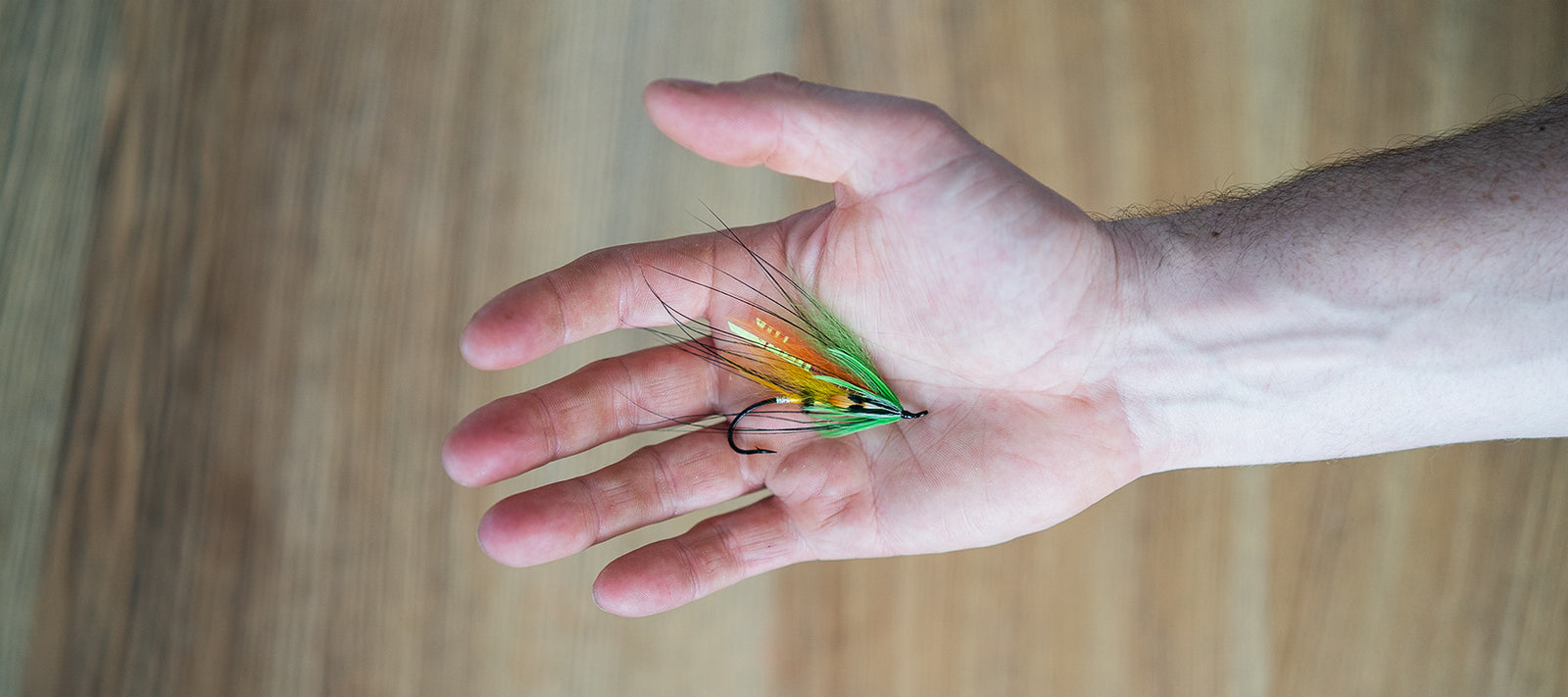Fly Fishing Hat | Dry Fly Multicam Black Camo Trucker
Orders received after December 15 will be processed starting January 6.
Orders received after December 15 will be processed starting January 6.

The Right Salmon Fly?
April 07, 2021 3 min read
The right Salmon Fly color and size
By Maxime Wehinger
When you start fishing for Atlantic salmon, you quickly realize that you'll never stop learning. And in the end, that's what makes this type of fishing so complete and addictive.
One question that comes up every time you go out is: What fly should I use? Everyone has an opinion on the subject. Some people study the question in depth and others will say that it doesn't matter, the good fly is the one that is in the water. Indeed, there is no miracle recipe.
There are several factors that will help you determine the right size and color of fly to use, like water level, opacity of the water and light conditions.

The Salmon's vision
The salmon's eye has two important properties to remember. The cones and the rods. The cones, which operate during the day, when the light is dominant, allow the salmon to detect more details, such as the different shades of colors.
The rods take over from the cones when daylight turns to darkness. At this moment, the salmon does not perceive colors anymore, it only sees shapes, white, black or strong contrasts.
Colors Wavelengths
Be aware also of the colors wavelengths, which is from the shortest to the longest wavelength: purple, indigo, blue, green, yellow, orange and red. It's best practice to prioritize colors with a long wavelength like red and orange when the water is brown and opaque and choose short wavelength colors like purple or blue when the water is clear and transparent.
Factors to remember
We often hear fly fishermen say to use small flies when the water lever is low and big flies when the water lever is high. It's a good starting point, but there are other factors to take into consideration.
The chart below will help you visualize the things to ask yourself and the decisions to take in a fishing scenario. It will help you define how to choose the salmon fly that will increase your chances to scream: FISH ON!!!


 Things to remember
Things to remember
- Break the rules from time to time.
- The action of the fly in the water is not to be overlooked. It's probably more important than its color or shape.
- Early in the season when the water is cold, the salmon's vision change is longer between rod and cone. Fish up to 60 minutes after sunrise with high contrast flies.
- Salmons see up to 20 shades of colors. Do not underestimate the colored tails as long as colored fibers and wings.
- Change the profile and the pattern of flies on the same pool, big, small, more hairs, less hairs, different colors (wet flies, bugs, leech, woolly bugger, spey, trotinette, muddler, etc).
- Silver body flies act like a mirror in cloudy conditions so they get lost in their environment. On a sunny day, however, the light reflects on them and they become very visible and attractive to the salmon.
- Fishing with dry flies is ideal from 55 degrees Fahrenheit or 12.75 degrees Celsius.
- In the morning, the salmon will be higher in the water column and closer to the shore. During the day, they will be deeper and in the center of the pool.
- Be careful with how you approach the pool. Check for the orientation of the sun to avoid making shadows on the river. Fish with the sun in mind, you don't want the salmon to miss your fly because they will be blinded trying to grab it.
- A willing salmon is often one that rises, rolls or splits the surface of the water. On the other hand, a salmon that jumps will rarely be a taker. But it will be a good indication that there are salmon in the pool.
- A salmon may catch a fly near the bank. Let your fly drift, let it work, sometimes a second more in the water can turn your day of failure into a day of glory.
- No matter your skills, your years of experience or your type of fly rod, have fun! Hard thinking is good, but enjoying the moment is better!
Written by: Maxime Wehinger

Subscribe
Sign up to get the latest on sales, new releases and more …

